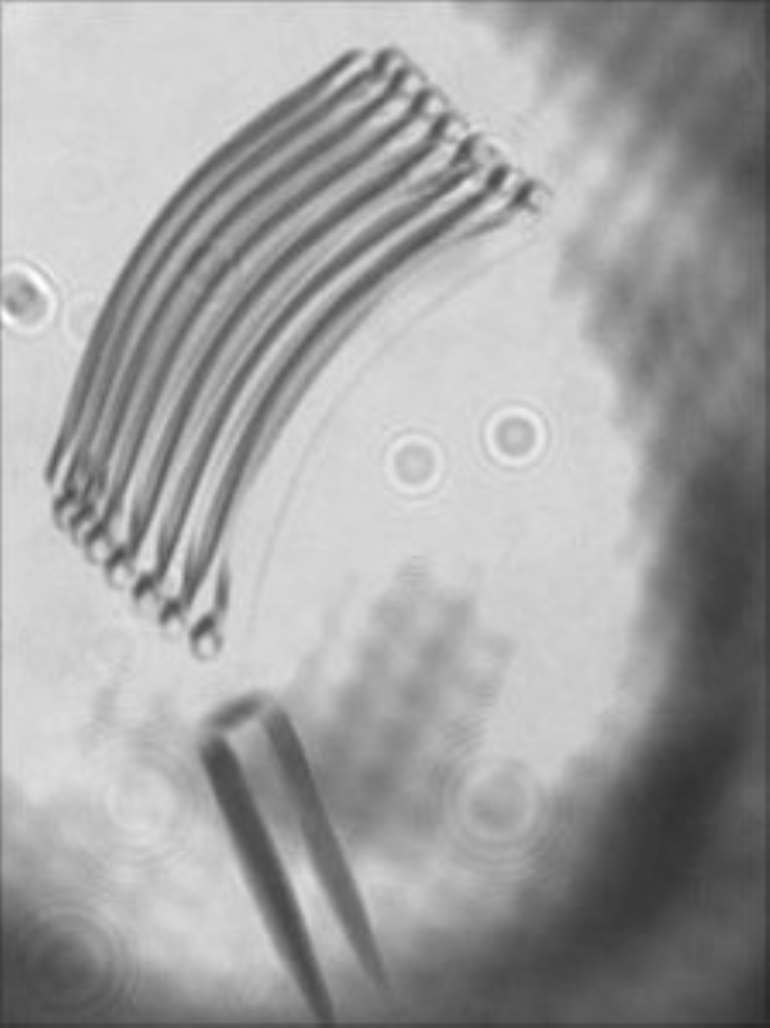‘LIGHTFOIL’ IDEA SHOWS LIGHT CAN PROVIDE LIFT

Time-lapse images show the progression of the “lightfoil”
Just as air causes lift on the wings of an aeroplane, light can do the same trick, researchers have said.
The effect, first shown in simulations, was proven by showing it in action on tiny glass rods.
Like the aerofoil concept of wings, the approach, published in Nature Photonics, works by making use of the radiation pressure of light.
The results are of interest for steering “solar sails”, a spacecraft propulsion based on the same force.
Each photon – or packet of light – carries its own momentum, and this “lightfoil” works by gathering the momentum of light as it passes through a material.
This radiation pressure has been considered as a fuel-free source of propulsion for long-distance space missions; a “solar sail” gathering up the momentum of the Sun's rays can get a spacecraft up to a significant fraction of the speed of light.
But until now, no one thought to use the pressure in an analogue of an aerofoil, said Grover Swarzlander of the Rochester Institute of Technology (RIT).
“Here at RIT we have a group that… do ray tracing through objects to render computer graphics stuff all the time,” he told BBC News.
“So I said let's just turn this problem onto one of these ray-tracing programs and see what happens.”
The team ran computer simulations based on a semi-cylindrical glass rod to see what would happen when a beam of unfocused light was shone on it.
Uplifting
They discovered not only that the rods experienced “lift”, but that there were several angles that the rod tended to align itself to.
“The surprising thing from our model shows it has different positions of rotational equilibrium, so it will roll to a given position, stay there, and continue to undergo lift,” Dr Swarzlander said.
Continue reading the main story
Light coming in from the left passes through the glass “lightfoil”
Some passes straight through the back surface, while some is reflected and exits through the bottom (white arrows)
This change in the light particles' momentum is balanced by another force: lift (blue arrow)
The team went on to design tiny glass rods, less than a hair's breadth across, to prove the principle.
The rods were floated in water, through which a laser was shone. They behaved just as the simulations had predicted.
Given the widely known radiation pressure effect, the discovery of optical lift may be most surprising in that no one had come to this conclusion before.
“They've designed experiments very able to exploit the optical forces that one knows exist, but exploit them in a way so that a collective movement was induced,” said Ortwin Hess, an optical researcher at Imperial College London.
“This 'optical lift' is a nice analogy,” Professor Hess told BBC News.
“One of the problems with solar sails is that they're not always aligned in the most toward (starlight) at a given moment so… self-alignment based on those elements would certainly have a big advantage.”
The effect may also be of interest for things even smaller than the tiny glass rods of the group's experiments.
Dr Swarzlander said his group will continue to optimise the shape of their lightfoils, and then “try to go in the microscopic regime, to see if we can tether small particles – biological tissue for example – to these light foils and drag them along”.
